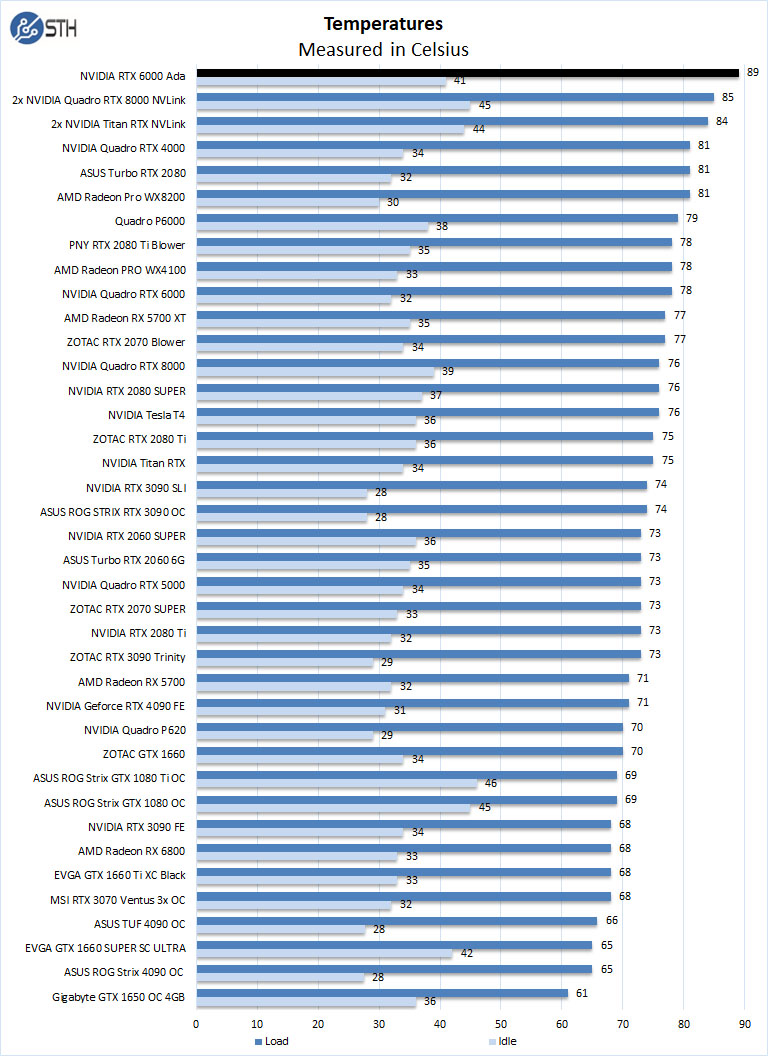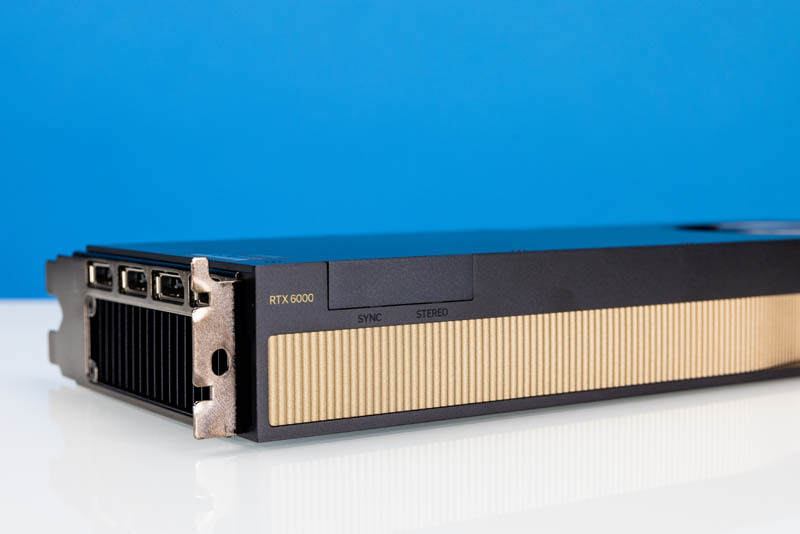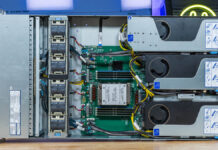Power Consumption Tests
For our power testing, we used AIDA64 to stress the NVIDIA RTX 6000 Ada, then HWiNFO to monitor power use and temperatures.

We use the AIDA64 Stress test for our tests, which allows us to stress all aspects of the system. We selected just the GPU for this test and let it run for about 15 minutes. While idle, the RTX 6000 Ada pulls about 17 watts and loads up to about 305 watts. These are good numbers when considering that the RTX 6000 Ada will often be deployed in multi-GPU setups.
Perhaps the bigger takeaway is in the context of performance. The NVIDIA RTX 6000 Ada is indeed close to the GeForce RTX 4090 in terms of performance. They both use the Ada Lovelace architecture. In most benchmarks, they are close. In some the RTX 6000 Ada leads. In other the GeForce RTX 4090 leads. The NVIDIA RTX 4090 is taking 50-60% more power to hit this similar performance level. That is amazing. For multi-GPU setups, the NVIDIA RTX 6000 Ada is still viable, the GeForce RTX 4090 is almost not viable given that 900-1000W will be used just by the two GPUs, let alone other systems on a circuit.
Cooling Performance
A key reason that we started this series was to answer the cooling question. Blower-style coolers have different capabilities than some of the large dual and triple fan gaming cards. With newer warmer GPUs, we see fewer blower-style coolers. This is certainly a change over this project’s lifetime.

The RTX 6000 Ada GPU does run warm. It is a smaller GPU with a blower-type cooler, so it does not have three large fans and a huge heat sink to help cool it. The RTX 6000 Ada will mostly be installed in workstation-type cases and servers. These usually have much larger cooling infrastructures, which will help cool the RTX 6000 Ada even more. Still, the GPU is relying more on chassis cooling to help as it is hotter at max load.
Final Words
If you are upgrading from a NVIDIA RTX 6000 or RTX 8000 generation card, the new RTX 6000 Ada (we will concede that is confusing to read/ write) is awesome. 2.5-3x generational performance improvements in a similar power envelope are great. What is similarly impressive is that this card is roughly as fast, and sometimes faster than a NVIDIA GeForce RTX 4090. That may not sound exciting until one realizes that the RTX 6000 Ada is using ECC memory and the GeForce card uses 50-60% more power. From an efficiency standpoint, this is amazing.

Next for the card is that we are revamping our AI and data science workloads beyond just the new CFD simulation workload we ran. We are going to have more of those results as we gather more data. Performance there is, of course, compelling and similar to what we have seen on our standard creator test suite.

The NVIDIA RTX 6000 Ada is not “cheap”. This is a high-end GPU for the most demanding creative professionals. With 48GB of memory (with ECC), a high-end Ada Lovelace generation design, and more this is a GPU that is the pinnacle of today’s professional desktop GPUs.
A quick thank you again to PNY, NVIDIA, and BOXX for making this review possible. Stay tuned for more on this card for data scientists.




nice review, was wondering why the RTX A6000 wasn’t taken into the comparisons, the “original” RTX A6000 is a generation before that, the A6000 is one generation old
edit: the “original” RTX 6000 (minus the A), and i ment it is 2 generations old,
sorry for the typo
Did you use Nvidia’s “Studio Driver” for the 4090 tests? That driver has optimizations for some professional applications. I’m particularly interested to see if the 4090 gets a performance increase for the specviewperf tests.
junk in price/performance terms. But we don’t have other choice if we want to use +24GB memory over the 3090/4090 memory (for 3x the price – wow sooo expensive extra 24G GDDR-6). The premium price is clearly usage of the monopoly situation of Nvidia.